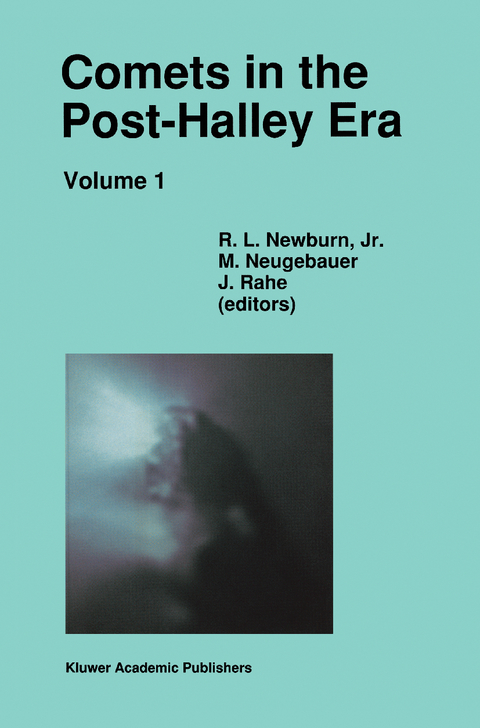
Comets in the Post-Halley Era
Seiten
1991
Springer (Verlag)
978-0-7923-1165-2 (ISBN)
Springer (Verlag)
978-0-7923-1165-2 (ISBN)
Comets are always very impressive phenomena.
The second volume goes into the details of what a comet is: the nucleus, the coma, cometary dust, plasmas and magnetic fields.
The book discusses all aspects of comets and is therefore suitable for use in graduate level courses.
Comets are always very impressive phenomena. Their appearances at regular, but mostly irregular, times excite people who see them. Astronomers have the obvious advantage of being able to see more of comets, and to study them. Their enthusiasm is reflected in the 50 papers in this book, written by more than 90 experts.
The reviews in this book clearly describe a landmark in the history of cometary studies. Knowledge gathered up to and including Comet Halley are presented in two volumes. The first volume is about general aspects of observing and studying comets, where they originate and how their evolution develops.
The second volume goes into the details of what a comet is: the nucleus, the coma, cometary dust, plasmas and magnetic fields. The book ends with a reflection by Fred Whipple about Comets in the Post-Halley Era.
The book discusses all aspects of comets and is therefore suitable for use in graduate level courses. All astronomers and geophysicists interested in comets will find very useful and well-presented information in this book.
The second volume goes into the details of what a comet is: the nucleus, the coma, cometary dust, plasmas and magnetic fields.
The book discusses all aspects of comets and is therefore suitable for use in graduate level courses.
Comets are always very impressive phenomena. Their appearances at regular, but mostly irregular, times excite people who see them. Astronomers have the obvious advantage of being able to see more of comets, and to study them. Their enthusiasm is reflected in the 50 papers in this book, written by more than 90 experts.
The reviews in this book clearly describe a landmark in the history of cometary studies. Knowledge gathered up to and including Comet Halley are presented in two volumes. The first volume is about general aspects of observing and studying comets, where they originate and how their evolution develops.
The second volume goes into the details of what a comet is: the nucleus, the coma, cometary dust, plasmas and magnetic fields. The book ends with a reflection by Fred Whipple about Comets in the Post-Halley Era.
The book discusses all aspects of comets and is therefore suitable for use in graduate level courses. All astronomers and geophysicists interested in comets will find very useful and well-presented information in this book.
Volume I: Section I: Observing Techniques and Interpretation. Section II: Laboratory Studies and Simulations. Section III: Comets, Origins, and Evolution. Volume II: Section IV: The Cometary Nucleus. Section V: The Cometary Coma. Section VI: Cometary Dust. Section VII: Plasmas and Fields. Section VIII: Fred Whipple Reflects. Appendices. Index.
| Erscheint lt. Verlag | 30.4.1991 |
|---|---|
| Reihe/Serie | Astrophysics and Space Science Library ; 167 |
| Zusatzinfo | XXVIII, 1360 p. In 2 volumes, not available separately. |
| Verlagsort | Dordrecht |
| Sprache | englisch |
| Maße | 155 x 235 mm |
| Themenwelt | Naturwissenschaften ► Geowissenschaften ► Geologie |
| Naturwissenschaften ► Geowissenschaften ► Meteorologie / Klimatologie | |
| Naturwissenschaften ► Physik / Astronomie ► Astronomie / Astrophysik | |
| ISBN-10 | 0-7923-1165-5 / 0792311655 |
| ISBN-13 | 978-0-7923-1165-2 / 9780792311652 |
| Zustand | Neuware |
| Haben Sie eine Frage zum Produkt? |
Mehr entdecken
aus dem Bereich
aus dem Bereich


